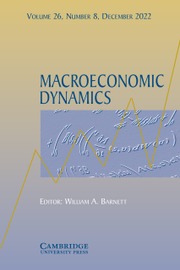No CrossRef data available.
Article contents
Forecast-based credit-to-GDP gaps for macroprudential policy
Published online by Cambridge University Press: 01 September 2025
Abstract
Banking supervisors rely on a set of indicators, such as the credit-to-Gross Domestic Product (GDP) gap, to evaluate the macro-financial environment and implement the countercyclical capital buffer. This paper proposes two supplementary indicators, based on forecast-based measures of the credit-to-GDP gap: forecast-augmented credit-to-GDP gaps and predicted credit-to-GDP gaps. While the former has already attracted attention from some banking supervisors, the latter represents a novel metric introduced here. These gaps are generated using singular spectrum analysis. We show that forecasting performance varies between countries and depends on credit market conditions. Furthermore, our results indicate that forecast-based credit-to-GDP gaps are effective in predicting the early stages of a credit boom.
Information
- Type
- Articles
- Information
- Copyright
- © The Author(s), 2025. Published by Cambridge University Press

